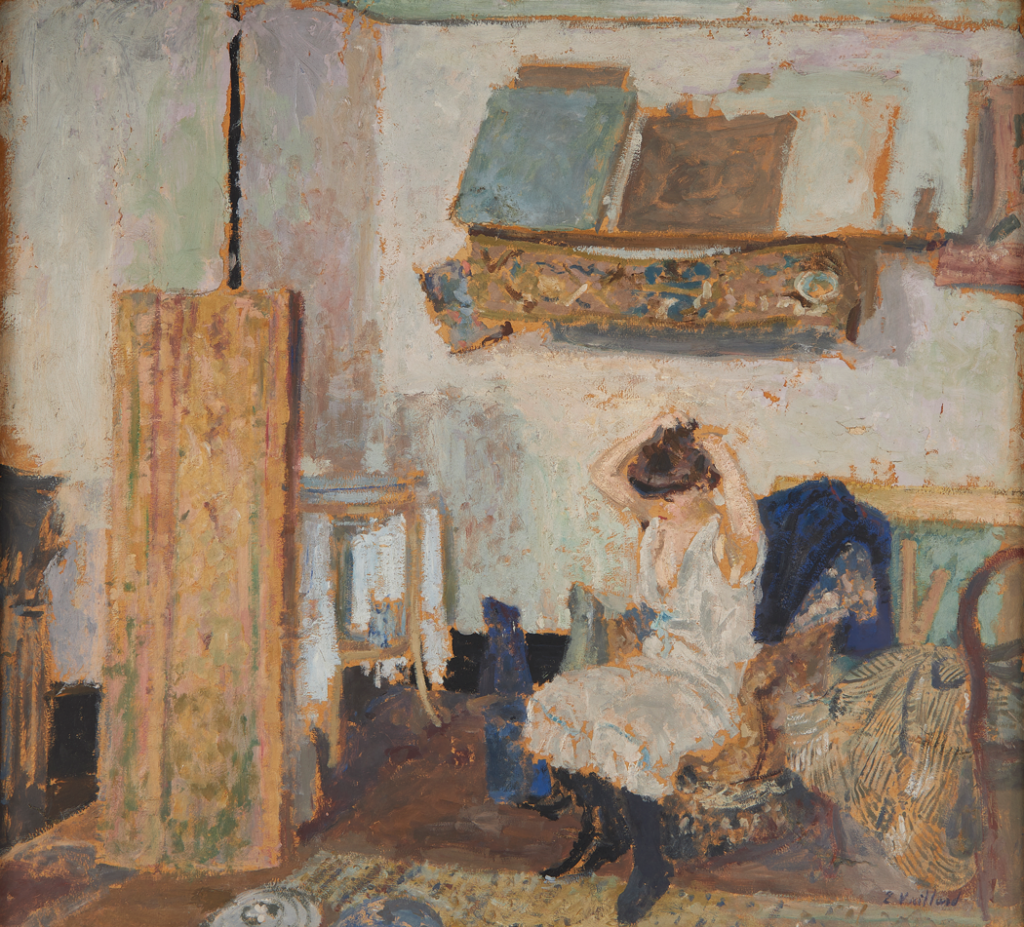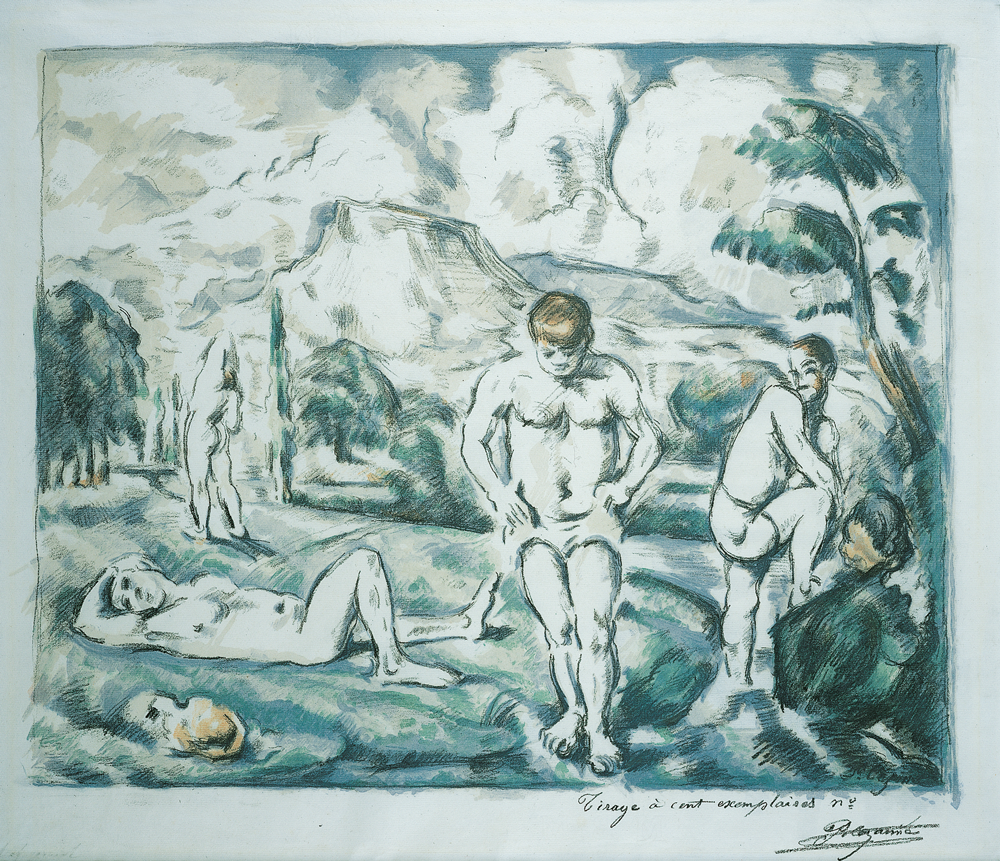
This week I thought I would take you to Pallant House Gallery for a flavour of their latest show Degas to Picasso. The exhibition provides a platform to showcase a number of the international, continental European modern prints and paintings in the gallery’s collection from the 19th and 20th centuries. It includes works by Degas, Manet, Picasso, Bonnard, Klee and Léger.
Amongst my favourite images on display is the 1898 lithograph by the Post-Impressionist Paul Cézanne titled ‘Les Grands Baigneurs’. Cézanne is regarded by many as the father of modern art. His work foreshadows Cubism and Fauvism. In this image the abstracted figures are united with the artist’s emotional engagement with the rhythms in nature and the landscape. Writing to a friend in the 1890s Cézanne would declare “Art is a harmony parallel with nature.”

The print seems to evoke Cézanne’s fond memories of swimming as a schoolboy with his closest friends, Émille Zola and Jean-Baptiste Baille in the Arc River near his home in Aix-en-Provence. It is an expression of idealised comradeship, of true friendship rather than passing acquaintance. It is my experience that the best and most creative things in life always come out of long-term relationships built on trust. These ideals were highly valued by the novelist Émille Zola.
The other is another intimate scene ‘Modèle assise dans un fauteuil, se coiffant’ from 1903 by the Post-Impressionist Édouard Vuillard. It was painted in Vuillard’s studio in Rue Truffant in Paris where his mother ran the family sewing business. It is redolent of many of the artist’s interiors. Vuillard believed that a painting is a grouping of harmonious lines and colours. The beautiful pattern of the brushwork in this oil on paper gives life, texture and space to the scene. There is an economy in the palette Vuillard employs which draws our eye through the composition. At the centre the model is lost in her thoughts as she combs and pins her hair.
This exhibition reminds us that many Modern British artists, including Walter Sickert and Harold Gilman, were influenced by the modern artistic movements of continental Europe.
As a nation we have always embraced the ‘modern’ across the centuries whilst, of course, keeping one eye on the past. After all the British are a processional people – we celebrate the past as we confidently embrace the future. Our eclectic taste, like our art, is distinctive to our island nation. The influence of the international has always informed British culture reflecting our nation’s global, outward facing character.
The importance of our museums, theatres and art galleries in articulating our hopes, common stories and identity is often overlooked and misunderstood: as is their significant and positive economic impact on our local economy. I hope that our politicians will continue to look at creative ways to support this sector through the current challenges.
These are difficult times for our county’s museums, theatres and art galleries. I hope that you will join me in supporting them once the current restrictions are eased.